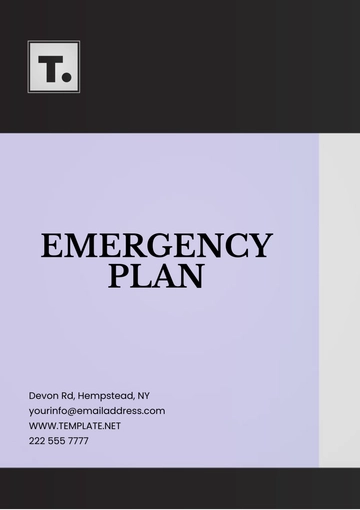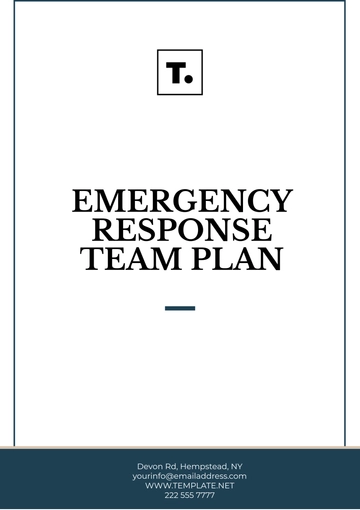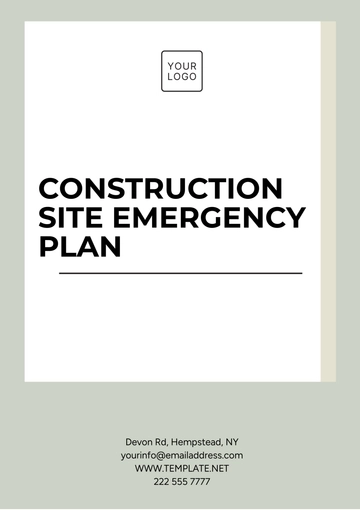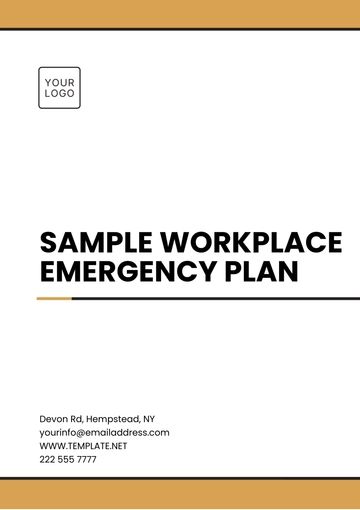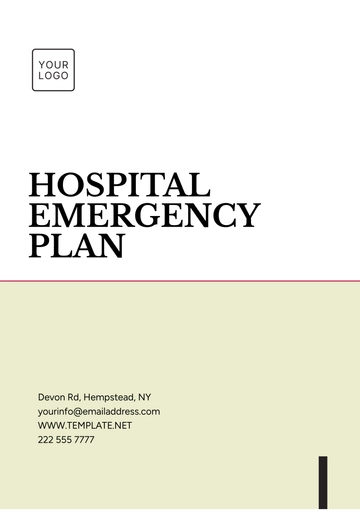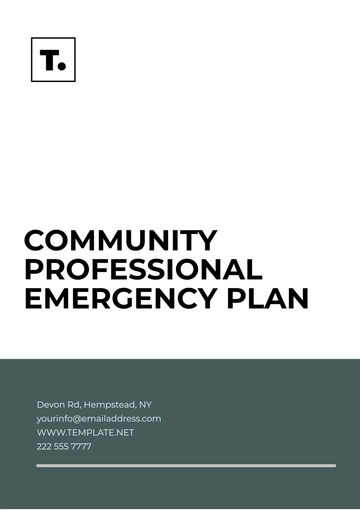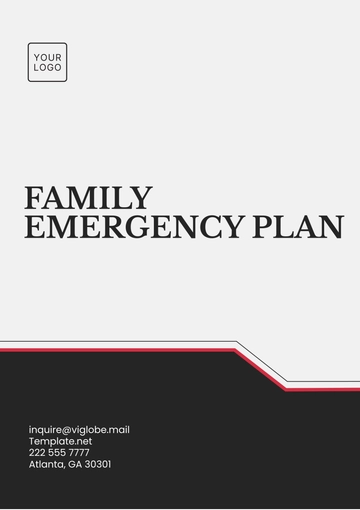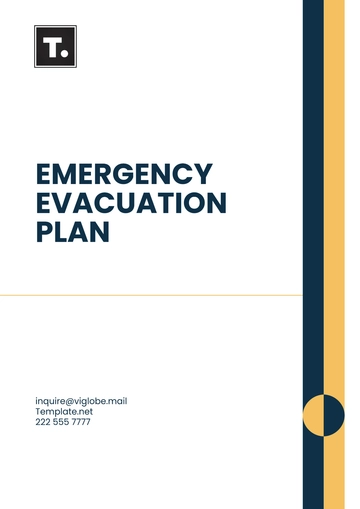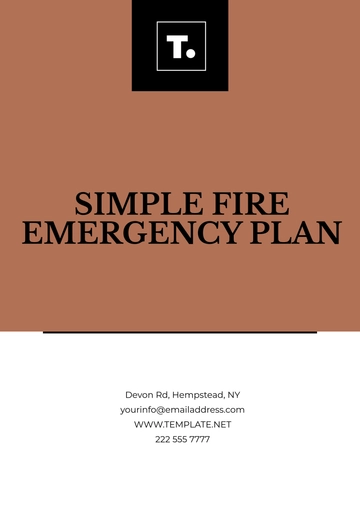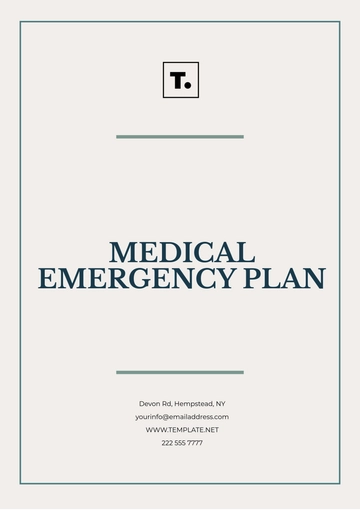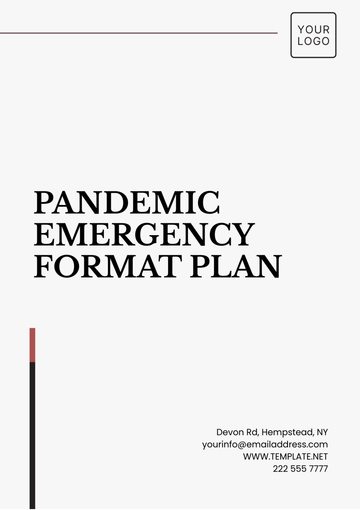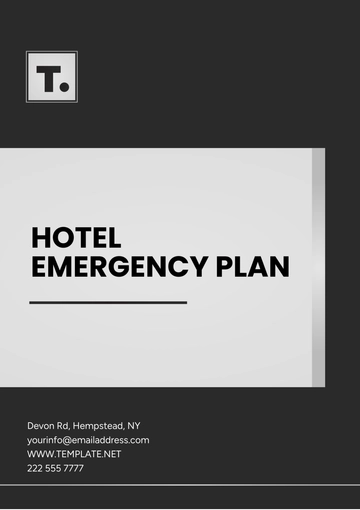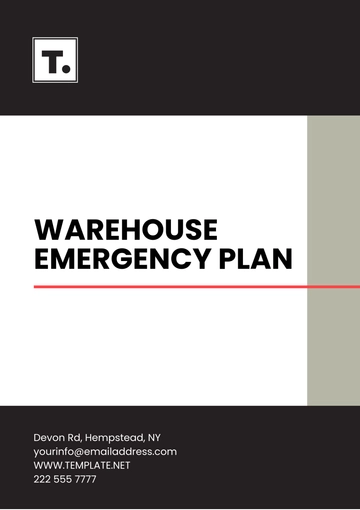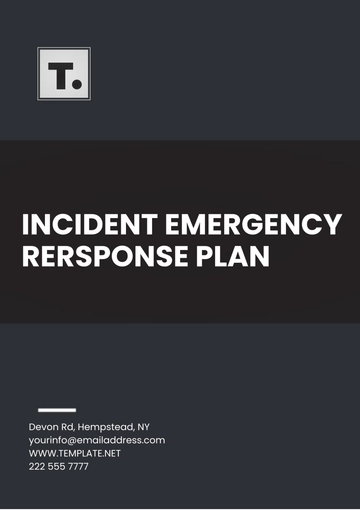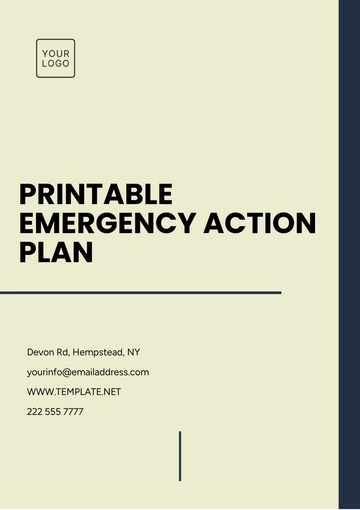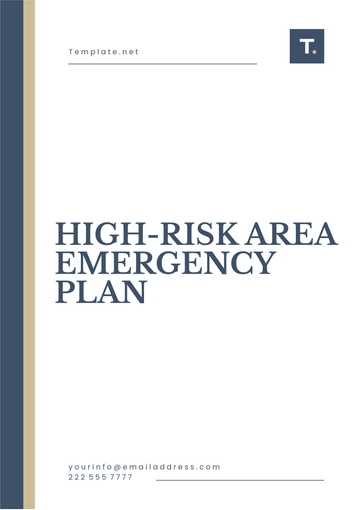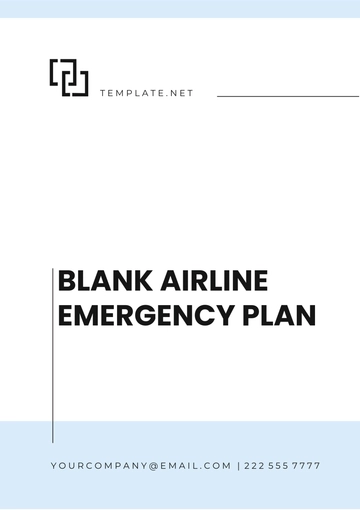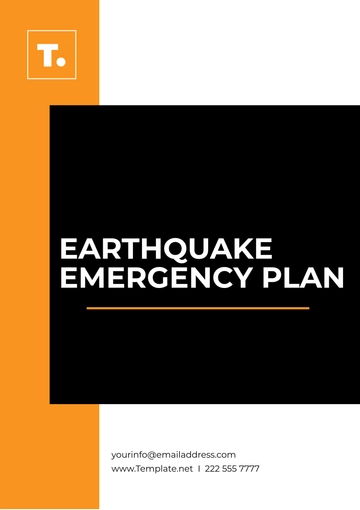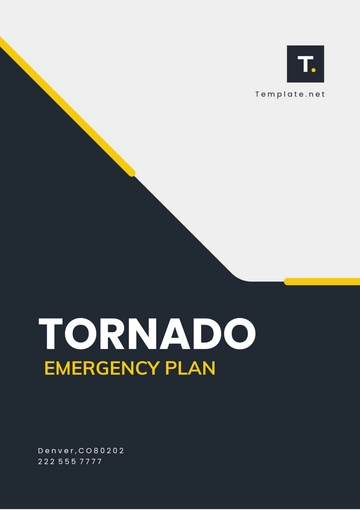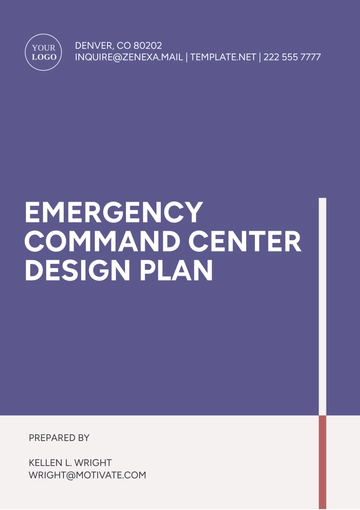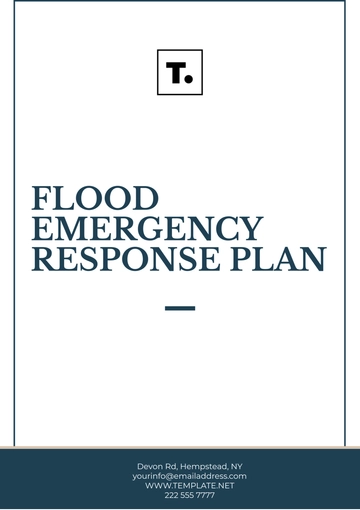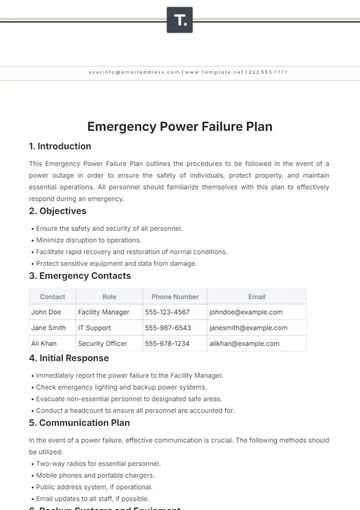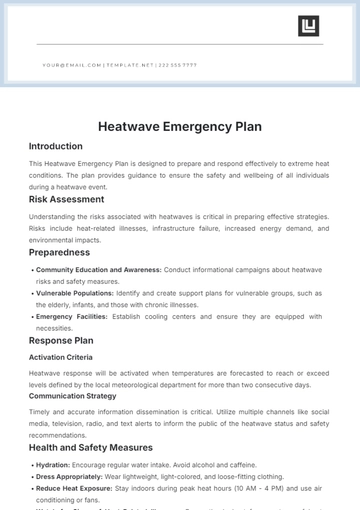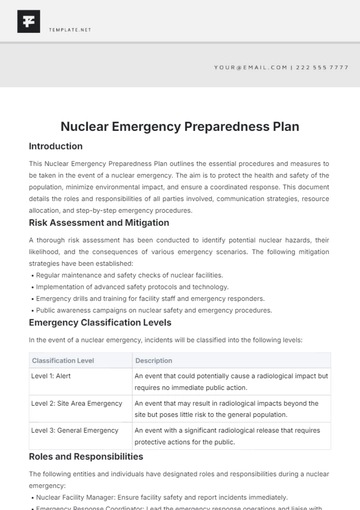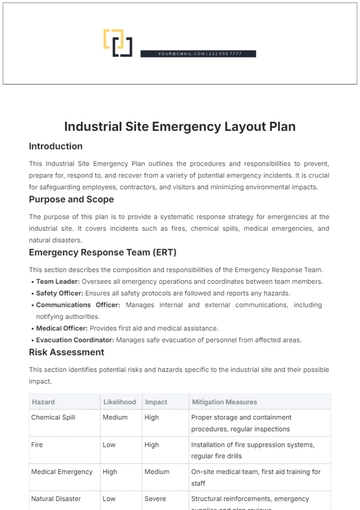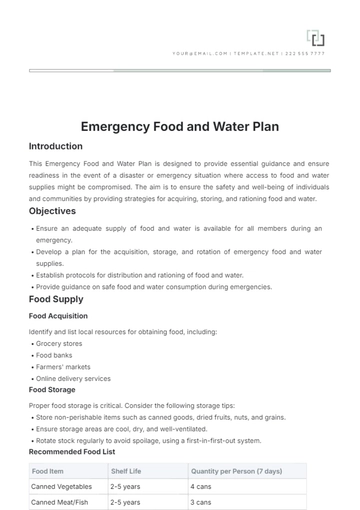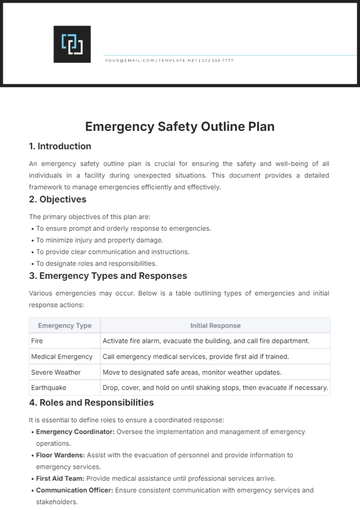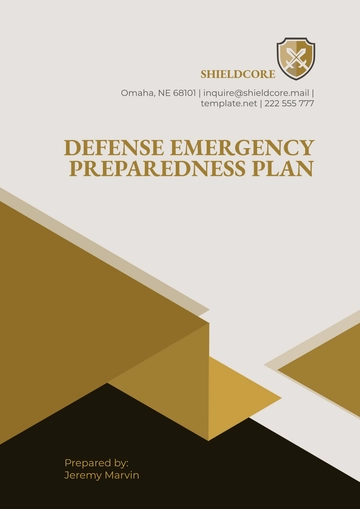Free Camping Emergency Plan
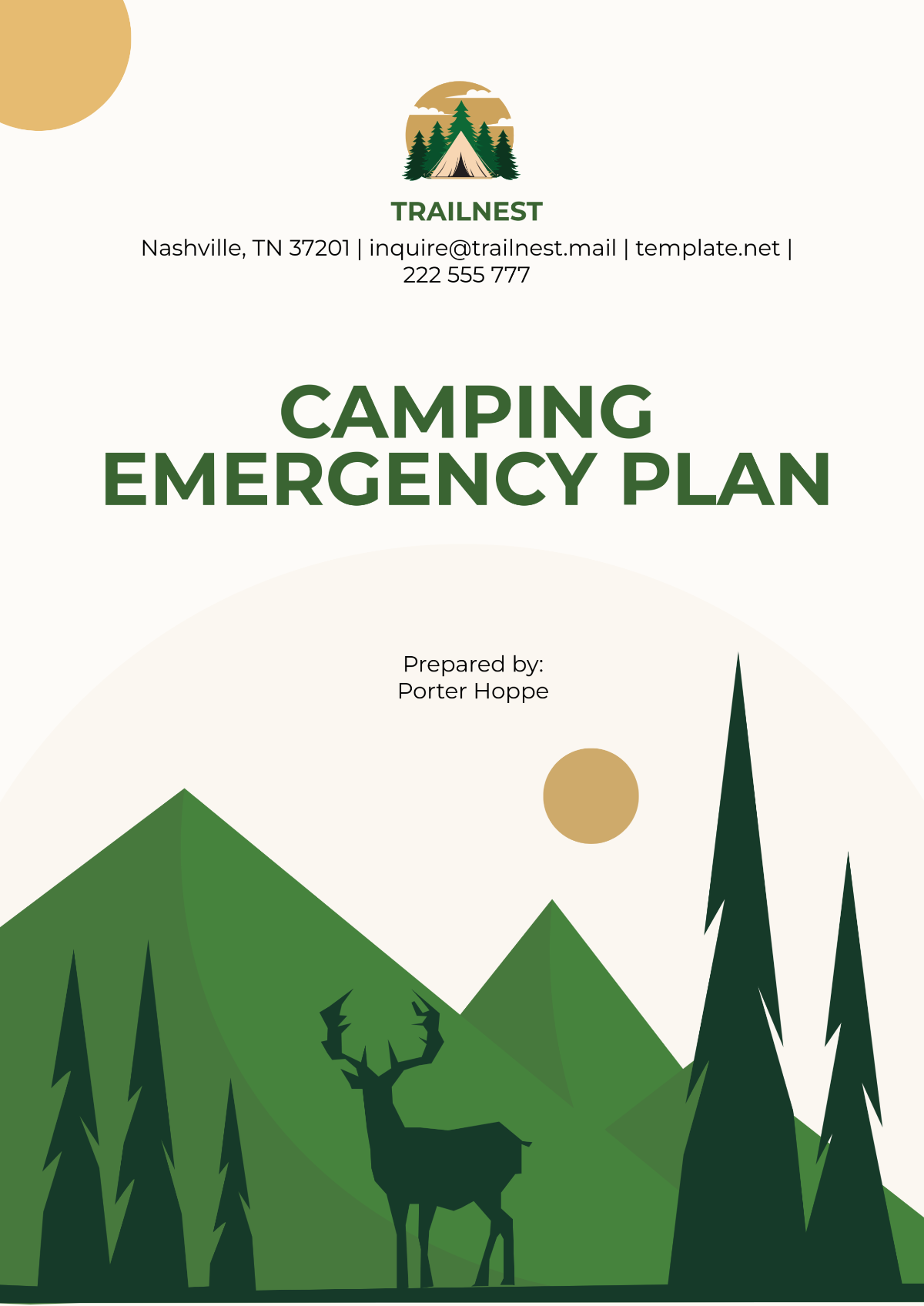
I. Introduction
Emergencies in outdoor camping environments can range from severe weather conditions to medical incidents, requiring a structured approach to ensure safety and minimize risks. This Emergency Plan outlines the steps to address, mitigate, and recover from potential crises during camping activities. By preparing for a wide range of scenarios, [Your Company Name] ensures the well-being of participants, staff, and other stakeholders.
Purpose and Scope
To provide a clear framework for handling emergencies, ensuring safety and efficient recovery during camping activities. The plan covers all activities related to camping, including hiking, overnight stays, and group expeditions.
II. Risk Assessment and Preparedness
Understanding potential risks is essential for implementing preventive measures and preparing an effective response. Proper risk assessment not only identifies potential hazards but also enables the organization to create actionable strategies to reduce their impact. By anticipating and planning for risks, [Your Company Name] maintains a secure environment for campers and staff.
Natural Hazards: Risks include extreme weather, wildfires, and wildlife encounters that can endanger campers.
Medical Emergencies: Injuries, dehydration, and allergic reactions are common incidents requiring immediate attention.
Equipment Failures: Issues like tent collapses or gear malfunctions can exacerbate emergencies.
Participant Risks: Unprepared or inexperienced campers may unintentionally increase risks.
Preparedness Measures: Emergency drills, equipment checks, and clear communication channels are established before every trip.
III. Emergency Response Teams
An effective response requires a well-coordinated team with clearly defined roles. The Emergency Response Team (ERT) is critical in managing crises, ensuring timely actions, and maintaining order during emergencies. By defining roles and responsibilities, the team operates seamlessly under pressure, reducing the likelihood of errors.
Team Structure: The Emergency Response Team includes a team leader, first-aid responders, and communication officers.
Training Requirements: All team members undergo specialized training in wilderness safety, CPR, and emergency communication.
Role Assignments: Each team member is assigned specific tasks, such as evacuation coordination or first-aid delivery.
Availability: Response teams are available 24/7 during camping activities to address potential crises.
Collaboration: The team maintains strong ties with local authorities and emergency services to expedite responses.
IV. Communication Protocols
Efficient communication is vital for managing emergencies effectively. Clear protocols ensure that information is relayed promptly and accurately to prevent confusion. By leveraging both technology and predefined guidelines, [Your Company Name] ensures that all stakeholders remain informed and aligned during critical moments.
Emergency Contact List: A comprehensive list of contacts, including local hospitals, police, and fire departments, is maintained.
Two-Way Radios: Radios are used for communication in areas without mobile network coverage.
Incident Reporting: All incidents are reported using a standardized template to ensure clarity and consistency.
Participant Notifications: Campers are informed of emergency protocols during orientation and briefings.
Follow-Up: Post-incident debriefs are conducted to improve communication strategies.
V. Evacuation Procedures
Evacuating a camping site safely and efficiently is a key aspect of any emergency response. Proper planning and practice ensure that all participants and staff know what to do and where to go during an evacuation. This section focuses on detailed procedures that minimize confusion and delays, prioritizing the safety of everyone involved.
Evacuation Routes: Pre-identified routes are mapped and shared with participants before camping trips.
Assembly Points: Designated safe zones are established for campers to gather during emergencies.
Transportation Coordination: Vehicles or helicopters are arranged for quick evacuation in severe situations.
Accessibility Considerations: Evacuation plans account for individuals with mobility challenges or other special needs.
Regular Drills: Evacuation drills are conducted to familiarize participants and staff with the process.
VI. Emergency Supplies and Equipment
A well-stocked inventory of emergency supplies ensures effective response during critical situations. Properly maintained equipment and supplies can make the difference between minor setbacks and serious consequences. Regular audits ensure that all supplies are functional and up to date.
Supply Item | Quantity | Usage Purpose |
|---|---|---|
First-Aid Kits | 10 | Treating injuries and wounds |
Flashlights | 20 | Navigation in low visibility |
Fire Extinguishers | 5 | Controlling small fires |
Emergency Blankets | 30 | Warmth for campers in shock |
Communication Radios | 15 | Coordination during crises |
The current stock covers essential supplies for up to 30 individuals, aligning with typical group sizes. However, additional fire extinguishers and radios may be necessary for larger groups or longer trips.
VII. Emergency Incident Trends
Analyzing historical incidents helps in refining response strategies and reducing recurrence. By identifying patterns, [Your Company Name] can proactively address recurring issues and allocate resources more effectively.
Incident Type | Frequency | Primary Causes |
|---|---|---|
Severe Weather Events | 15 | Sudden storms, high winds |
Wildlife Encounters | 10 | Proximity to natural habitats |
Equipment Failures | 12 | Wear and tear, poor maintenance |
Medical Emergencies | 8 | Dehydration, injuries |
Participant Issues | 6 | Lack of preparedness |
Severe weather and equipment failures are the most frequent issues, underscoring the importance of durable gear and weather monitoring. Medical emergencies, while less frequent, require robust first-aid preparedness.
VIII. Post-Incident Recovery
Recovery ensures a smooth transition back to normal operations while addressing the aftermath of an emergency. A structured recovery process allows the organization to maintain trust and continuously improve its response systems. This section outlines key steps in restoring normalcy and learning from each incident.
Damage Assessment: Evaluate equipment and environmental damage to plan repairs and replacements.
Medical Follow-Up: Injured individuals receive continued medical care and support post-incident.
Incident Review: A detailed analysis of the incident that identifies areas for improvement.
Stakeholder Communication: Transparent updates are shared with participants, staff, and other stakeholders.
Policy Updates: Lessons learned are incorporated into updated safety protocols and procedures.
IX. Training and Awareness
Training empowers staff and participants to handle emergencies confidently and effectively. Comprehensive education in safety procedures and potential risks ensures that everyone involved in camping activities is better prepared. Consistent training efforts help to foster a culture of safety within [Your Company Name].
Staff Training: Regular training on emergency protocols, equipment use, and first-aid procedures is mandatory.
Participant Briefings: All campers receive pre-trip briefings on emergency awareness and response.
Scenario Drills: Simulated emergencies help in refining response strategies and building confidence.
Feedback Integration: Training sessions are adjusted based on feedback and observed gaps.
Knowledge Resources: Manuals and quick-reference guides are provided to all staff and participants.
X. Conclusion
[Your Company Name] will enhance its emergency preparedness by investing in advanced safety equipment and expanding staff training programs. Collaboration with local emergency services will ensure faster response times and comprehensive support. Continuous monitoring, analysis, and updating of this plan will help maintain the highest safety standards and build trust among all stakeholders.
- 100% Customizable, free editor
- Access 1 Million+ Templates, photo’s & graphics
- Download or share as a template
- Click and replace photos, graphics, text, backgrounds
- Resize, crop, AI write & more
- Access advanced editor
Stay prepared with the Camping Emergency Plan Template from Template.net. Fully editable and customizable, this template is perfect for outlining safety procedures, contact details, and contingency measures. Update it easily in our AI Editor Tool with your specific emergency protocols. Its clear format ensures quick access to critical information in urgent situations.
You may also like
- Finance Plan
- Construction Plan
- Sales Plan
- Development Plan
- Career Plan
- Budget Plan
- HR Plan
- Education Plan
- Transition Plan
- Work Plan
- Training Plan
- Communication Plan
- Operation Plan
- Health And Safety Plan
- Strategy Plan
- Professional Development Plan
- Advertising Plan
- Risk Management Plan
- Restaurant Plan
- School Plan
- Nursing Home Patient Care Plan
- Nursing Care Plan
- Plan Event
- Startup Plan
- Social Media Plan
- Staffing Plan
- Annual Plan
- Content Plan
- Payment Plan
- Implementation Plan
- Hotel Plan
- Workout Plan
- Accounting Plan
- Campaign Plan
- Essay Plan
- 30 60 90 Day Plan
- Research Plan
- Recruitment Plan
- 90 Day Plan
- Quarterly Plan
- Emergency Plan
- 5 Year Plan
- Gym Plan
- Personal Plan
- IT and Software Plan
- Treatment Plan
- Real Estate Plan
- Law Firm Plan
- Healthcare Plan
- Improvement Plan
- Media Plan
- 5 Year Business Plan
- Learning Plan
- Marketing Campaign Plan
- Travel Agency Plan
- Cleaning Services Plan
- Interior Design Plan
- Performance Plan
- PR Plan
- Birth Plan
- Life Plan
- SEO Plan
- Disaster Recovery Plan
- Continuity Plan
- Launch Plan
- Legal Plan
- Behavior Plan
- Performance Improvement Plan
- Salon Plan
- Security Plan
- Security Management Plan
- Employee Development Plan
- Quality Plan
- Service Improvement Plan
- Growth Plan
- Incident Response Plan
- Basketball Plan
- Emergency Action Plan
- Product Launch Plan
- Spa Plan
- Employee Training Plan
- Data Analysis Plan
- Employee Action Plan
- Territory Plan
- Audit Plan
- Classroom Plan
- Activity Plan
- Parenting Plan
- Care Plan
- Project Execution Plan
- Exercise Plan
- Internship Plan
- Software Development Plan
- Continuous Improvement Plan
- Leave Plan
- 90 Day Sales Plan
- Advertising Agency Plan
- Employee Transition Plan
- Smart Action Plan
- Workplace Safety Plan
- Behavior Change Plan
- Contingency Plan
- Continuity of Operations Plan
- Health Plan
- Quality Control Plan
- Self Plan
- Sports Development Plan
- Change Management Plan
- Ecommerce Plan
- Personal Financial Plan
- Process Improvement Plan
- 30-60-90 Day Sales Plan
- Crisis Management Plan
- Engagement Plan
- Execution Plan
- Pandemic Plan
- Quality Assurance Plan
- Service Continuity Plan
- Agile Project Plan
- Fundraising Plan
- Job Transition Plan
- Asset Maintenance Plan
- Maintenance Plan
- Software Test Plan
- Staff Training and Development Plan
- 3 Year Plan
- Brand Activation Plan
- Release Plan
- Resource Plan
- Risk Mitigation Plan
- Teacher Plan
- 30 60 90 Day Plan for New Manager
- Food Safety Plan
- Food Truck Plan
- Hiring Plan
- Quality Management Plan
- Wellness Plan
- Behavior Intervention Plan
- Bonus Plan
- Investment Plan
- Maternity Leave Plan
- Pandemic Response Plan
- Succession Planning
- Coaching Plan
- Configuration Management Plan
- Remote Work Plan
- Self Care Plan
- Teaching Plan
- 100-Day Plan
- HACCP Plan
- Student Plan
- Sustainability Plan
- 30 60 90 Day Plan for Interview
- Access Plan
- Site Specific Safety Plan
